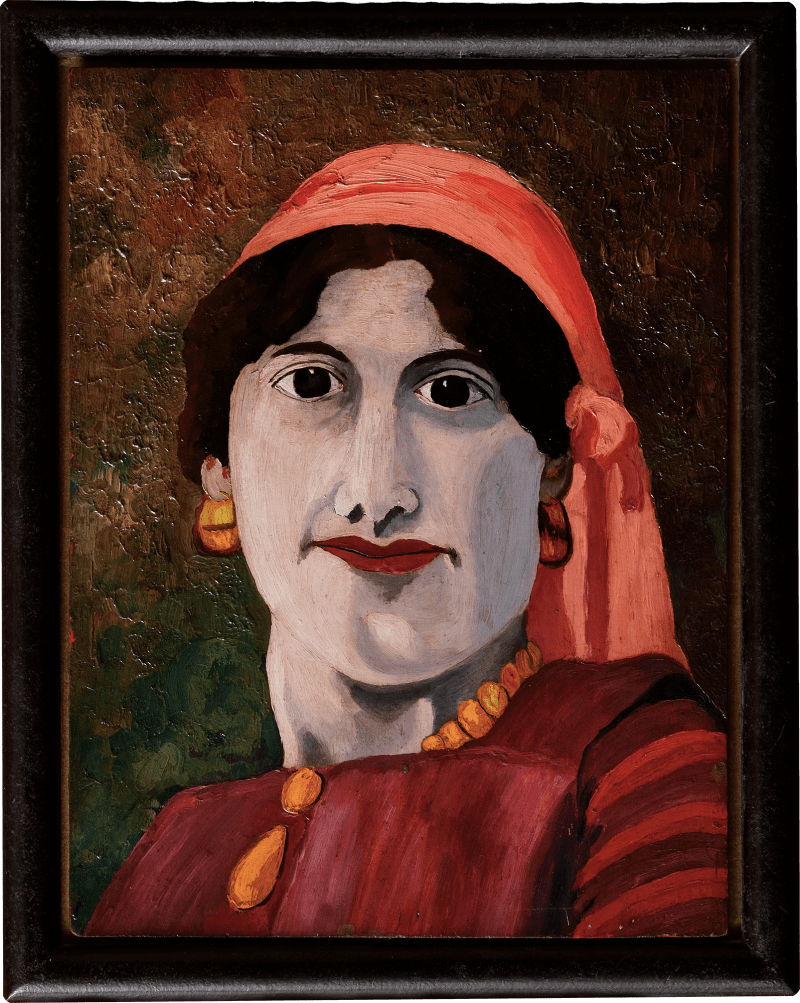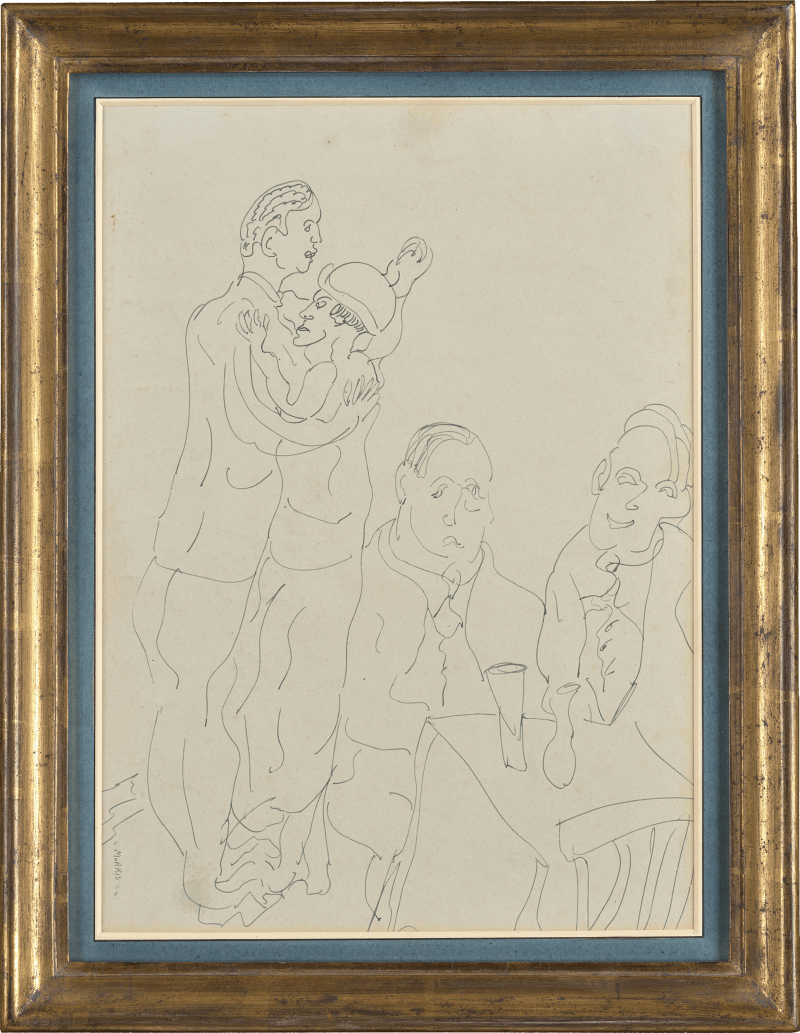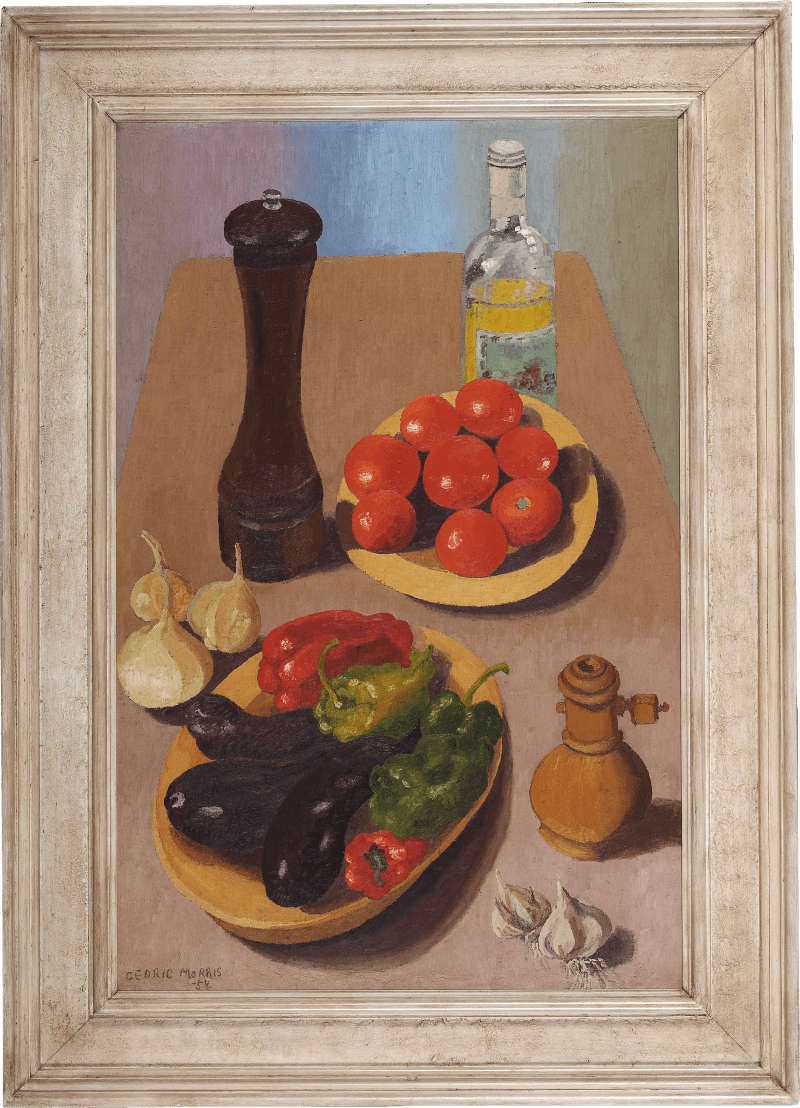By early 1921, Morris and Lett had moved from Cornwall to Paris, where they were to be based intermittently until 1925. They initially set up a studio on rue Notre Dame des Champs in Montparnasse and later moved to 39 rue Liancourt XIVE. Although neither of them remained in Paris for more than two months at a time, the French capital was of immense importance to the artists for its connection with continental Modernism, the Parisian avant-garde and its notable clientele. During the 1920s, Montparnasse was a haven for artists and intellectuals, as well as those wishing to live a more liberal existence. While in Paris, Morris and Lett made many friends as they moved through the creative circles that gathered at La Rotonde, Le Dôme and Le Sélect, all highly popular cafés among the budding avant-garde. Among known associates were Djuna Barnes, (1892–1982), Edward Burra (1905–1976), Nancy Cunard (1896–1965), Peggy Guggenheim (1998–1979), Kathleen Hale (1898–2000), Ernest Hemingway (1899–1961), Man...
By early 1921, Morris and Lett had moved from Cornwall to Paris, where they were to be based intermittently until 1925. They initially set up a studio on rue Notre Dame des Champs in Montparnasse and later moved to 39 rue Liancourt XIVE. Although neither of them remained in Paris for more than two months at a time, the French capital was of immense importance to the artists for its connection with continental Modernism, the Parisian avant-garde and its notable clientele. During the 1920s, Montparnasse was a haven for artists and intellectuals, as well as those wishing to live a more liberal existence. While in Paris, Morris and Lett made many friends as they moved through the creative circles that gathered at La Rotonde, Le Dôme and Le Sélect, all highly popular cafés among the budding avant-garde. Among known associates were Djuna Barnes, (1892–1982), Edward Burra (1905–1976), Nancy Cunard (1896–1965), Peggy Guggenheim (1998–1979), Kathleen Hale (1898–2000), Ernest Hemingway (1899–1961), Man Ray (1890–1976) and Mary Reynolds (1890–1950) (the partner of renowned provocateur and creative agitator Marcel Duchamp (1887–1968)).
Paris in the 1920s was a place of abandonment, expression and, most significantly, exchange. It was here that Morris was free to explore his artistic talents surrounded by an immense modernist presence, as exemplified by the many artists, critics, musicians, poets and writers who flocked from neighbouring Europe and America to develop their craft in the company of like-minded people. Morris absorbed his surroundings when in Paris, sketching in cafés across the city. His depiction of people in these early works blend caricature with an affectionate gaze that serves to heighten the individualistic personality Morris invests in his café scenes. Although Le Bon Bock was not in Montparnasse, it was a café of artistic distinction and one with a rich heritage, Édouard Manet (1832–1883) having painted a work of the same title in 1873. Situated in the other, perhaps more renowned artistic quarter of the city, Montmartre, Le Bon Bock was a hub of artistic exchange and boasted a vibrant urban atmosphere.
In this work, Morris captures a fleeting moment of bustling activity as a waiter makes his way through the jostling crowd of customers. Morris made many sketches during this period in cafés and restaurants, and it is likely that he painted this back at his studio. Morris manages to retain the sense of modern leisure and transient activity not dissimilar to that explored by the Impressionists before him. Although the technique and stylistic approach differ wildly from artists such as Claude Monet (1840–1926) and Camille Pissarro (1830–1903), Morris does appear to engage with modernity as a valid subject matter, perhaps reminding the viewer of sentiments expressed by Charles Baudelaire (1821–1867) in his essay The Painter of Modern Life (1863). Much like Manet, Morris assumes the position of an engaged and watchful flâneur, creating a painting rich in character and personal interpretation of contemporary Paris in 1922.








